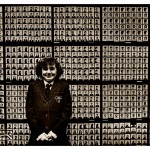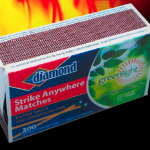Tag Archives: photography
120 Matchbox Pinhole Project – Part 4
This is the fourth of a number of posts that will be devoted to the construction and the use of such a camera.
Selfie is a four-letter word
For some reason there seems to be an acceptance that every image focused on the maker ever created in the history of artistic image-making must now be thrown into this single and greatly demeaning heading.
Shoot Your HDR on a String – Make a handheld HDR support
The device here is called a String-pod. It can be an effective tool to help steady the camera during most daylight HDR sequences as well as exposure times that are…………
Nighttime Photography with a Flashlight
Nocturnal light painting with a flashlight is a way to make sure that the important subject details are illuminated in the final rendition.
A Grande Shade – Save those coffee thingies!
Most of you probably throw these things away. Found in nearly every coffee joint, they can be useful right when you need them. I keep a few of them in my camera bag just in case.
When Photographs Were Round
It may be hard for some to imagine that there was a time when snapshot images were produced in the round.
Dirkon – The Paper Pinhole Camera
Personally, I find the HOLE idea, (excuse the pun) absolutely amazing. Pinhole is magical in that it requires no sensor, no mechanical parts and no lens. While it is possible to use a pinhole in place of a lens on a digital camera to take pinhole images, a tiny hole in a simple box with a piece of light sensitive material inside is far more impressive.
120 Matchbox Pinhole Project – Part 1
The only thing I knew at that point was that that a large size matchbox has the same height dimension as a roll of 120 film. I also realized that 120 film which does not have a cassette, would require a much more robust system to make it function in this setup.
Lytro 3D Stereo – Pretty Cool! Pretty Crazy!
Since Lytro’s introduction, there have been a few other implementations including its latest ability to produce stereo 3D imagery.











